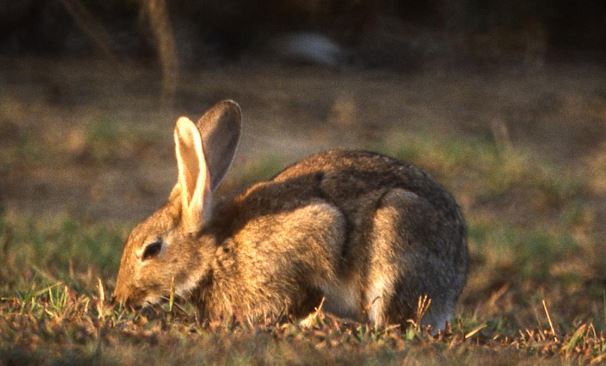What residents are seeing: After the colder months, daytime temps rising into the 20s °C bring a burst of mosquito activity. That’s when the rabbit viruses that circulate in WA — Rabbit Haemorrhagic Disease Virus (RHDV), often called calicivirus, and myxoma virus (myxomatosis) — tend to flare, and people start finding rabbits that have died overnight without obvious predator marks.
What these viruses are (plain English)
- RHDV (calicivirus): A highly contagious virus that affects only European rabbits (Oryctolagus cuniculus).
- Myxoma virus (myxomatosis): A poxvirus disease, also specific to European rabbits.
Good news for pet owners & farmers: These viruses are species-specific. They do not infect dogs, cats, livestock, poultry, native wildlife species, or humans. Keep pets away from carcasses (hygiene), but there is no cross-species infection risk.
How they spread
- Mosquitoes & fleas: Important vectors, especially as weather warms.
- Mechanical spread: Flies, contact with infected rabbits, and contaminated material can move virus between rabbits.
- Environment: Localised outbreaks can cycle naturally; sometimes government/land managers use RHDV for control, but many outbreaks occur without fresh releases.
“Warmer spring days mean more mozzies — and that’s when rabbit viruses kick in. If you’re seeing dead rabbits with no bite marks, it’s very likely RHDV or myxomatosis circulating.”
What to do if you find dead rabbits on your property
- Safety first: Keep children and pets away. Wear gloves (or use a shovel) to handle carcasses.
- Disposal: Double-bag and bury away from waterways at a sensible depth, or follow your shire’s waste advice. Wash hands, disinfect tools.
- Hygiene: Don’t leave carcasses exposed (flies/mosquitoes). Clean up feed spills that attract rabbits; secure bins.
- Pets: There’s no cross-infection, but eating carcasses can cause stomach upsets — keep dogs away.
- Domestic rabbits: Speak to your vet about RHDV vaccination schedules for pet rabbits. (A myxomatosis vaccine is not available in Australia.)
Reducing spread around your place
- Control mosquitoes: Tip out standing water, fix leaks, maintain gutters and troughs.
- Manage harbour: Reduce rabbit shelter (dense scrub at fencelines, rubbish/heaps, under-building access).
- Feed discipline: Clean up grain/pellets quickly; store securely to avoid attracting rabbits (and rodents).
- Work together: Talk to neighbours so efforts line up across fence lines.
FAQ – quick answers
Q: Will the virus hurt my dog, cat, chooks, sheep, or kids?
A: No. RHDV and myxomatosis are rabbit-only viruses. Still practice hygiene and keep pets away from carcasses.
Q: Why are most bodies found in the morning?
A: Many deaths occur overnight; in spring, increased mozzie activity accelerates spread and timing.
Q: Could this be baits?
A: Sometimes land managers release RHDV as part of coordinated control, but most spring die-offs are natural virus cycling. If you’re unsure, you can contact the shire or DPIRD for local control info.
Who to contact (WA)
- DBCA Wildlife Licensing (general wildlife queries): (08) 9219 9000 • wildlifelicensing@dbca.wa.gov.au
- Local Vet (domestic rabbit vaccination/advice): Contact your nearest veterinary clinic.
- Shire of Toodyay: Check the shire’s website
References & Further Reading
- Department of Primary Industries & Regional Development (DPIRD). Rabbit control: RHDV1 K5, Factsheet DPIRD-153. Available from DPIRD Digital Library — https://library.dpird.wa.gov.au/bs_factsheets/71/
- Australian Veterinary Association (AVA). Advice on vaccination of rabbits and biosecurity practices. (Referenced in DPIRD factsheet; includes protocols and cautions.)
- PestSmart. National Standard Operating Procedure: Bait delivery of Rabbit Haemorrhagic Disease Virus (RHDV1) K5. pestsmart.org.au/protocol-rhdv1-k5-bait-delivery
- Invasive Species Council. Information on rabbit biocontrol in Australia. invasives.org.au/biocontrol-rabbits
- Western Australia Biosecurity / DPIRD Rabbit Control Program pages. (General info, updates, and releases.) dpird.wa.gov.au – Rabbit Control
- University research articles on RHDV and myxomatosis epidemiology in Australia (journal databases). Example: “RHDV2 Emergence & Impact – MDPI Pathogens”
Related local safety guides:
• Snake Season Advice 2025 – Morangup
• Keeping Snakes Away – Homes, Pets & Poultry

